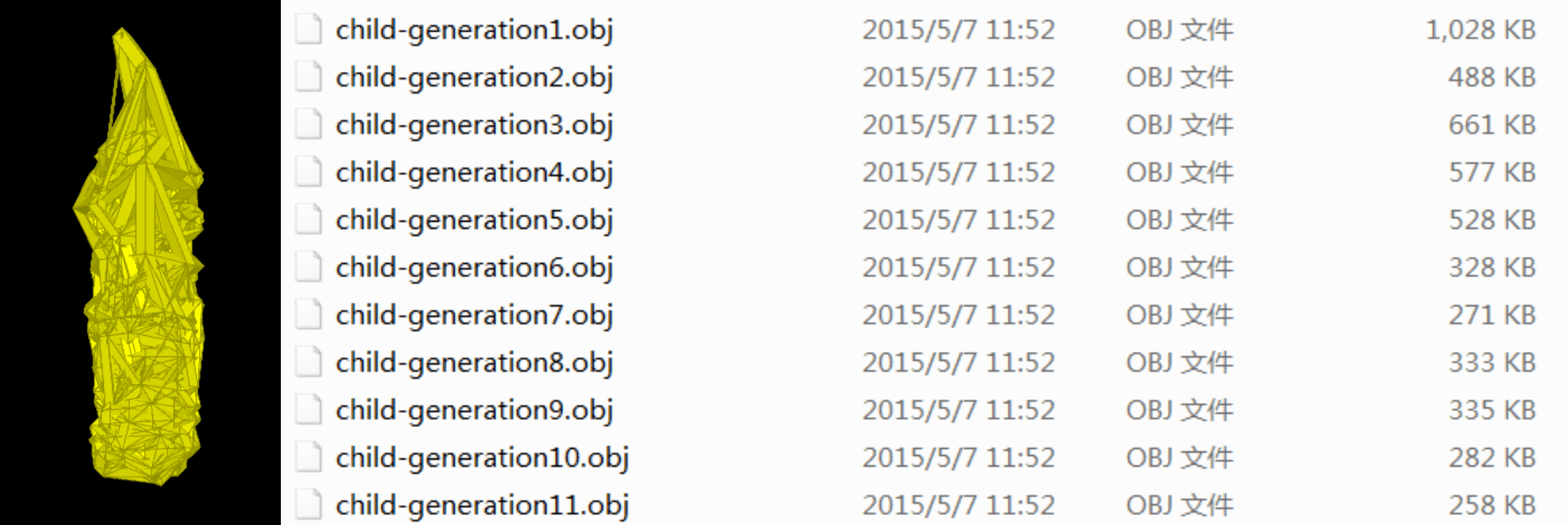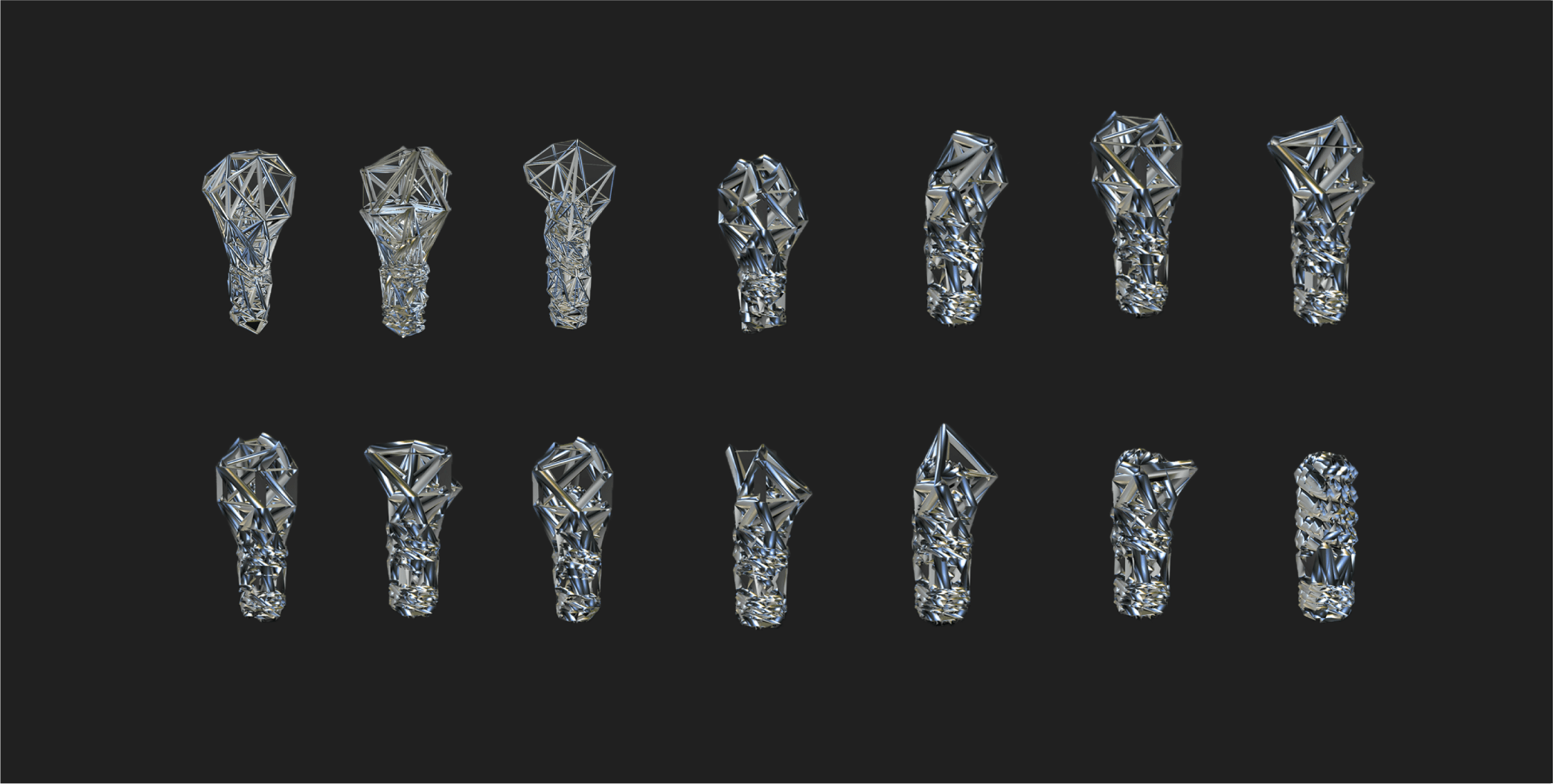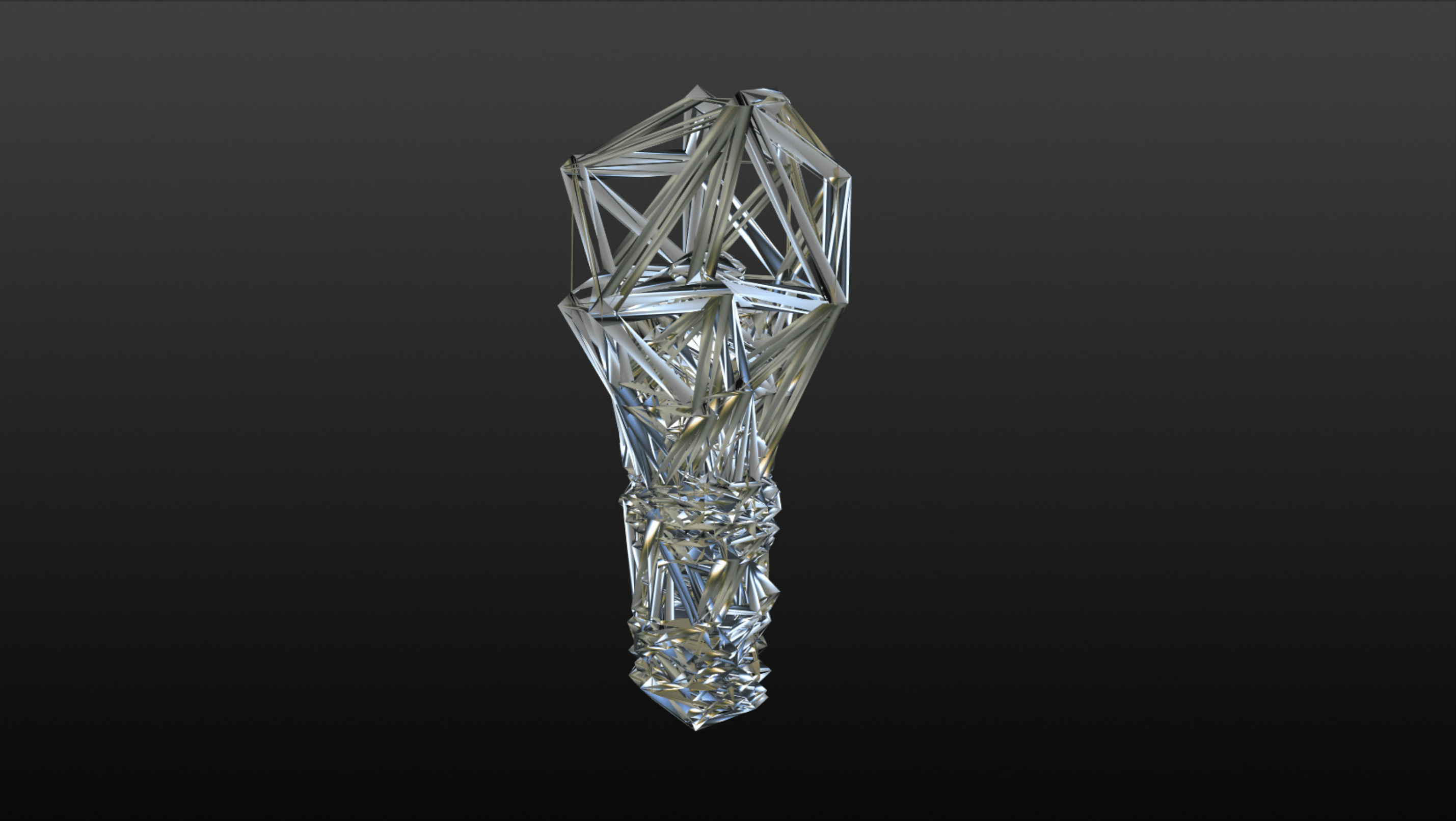
[2015] I led a team of masters students on the MA Design Informatics course as we explored the practical implications of using data to give agency to physical objects. We conceived and developed a speculative design prototype for imbuing physical objects with the ability to generate design iterations over time based on some underlying signal. As a practical way of demonstrating this idea, we explored objects whose physical form can be taken as a corollary of their energy efficiency, with changes in global temperature then being used as the signal through which the objects automatically redesigned future iterations given this environmental context.
Our approach was to subdivde the geometry of objects such that we could take groups of vertices to be genetic features, then using a genetic algorithm to generate populations of possible design iterations where this geometry information was used as a basis for determining fitness.
The project was presented at the National Museum of Scotland using an installation we built to demonstrate the growth and spawning of these 3D structures using holograms. The light bulb example is illustrated below.




